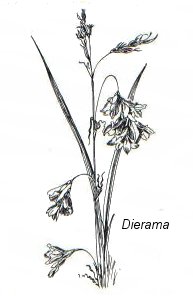Introduction  Melsetter
village is beautifully sited in the hills facing the Chimanimani Mountains on
the Eastern border of Rhodesia, about 90 miles south of Umtali the main town of
Manicaland. The name was chosen by Thomas Moodie whose grandfather, the last
laird of Melsetter in the Orkney Islands, came to South Africa in 1817. In 1892
when the Moodie Trek was on its way to Gazaland Thomas Moodie wrote to the
British South Africa Company: �I want to suggest, for the approval of the
Company, that the name of my settlement be the Melsetter Settlement.� Melsetter
village is beautifully sited in the hills facing the Chimanimani Mountains on
the Eastern border of Rhodesia, about 90 miles south of Umtali the main town of
Manicaland. The name was chosen by Thomas Moodie whose grandfather, the last
laird of Melsetter in the Orkney Islands, came to South Africa in 1817. In 1892
when the Moodie Trek was on its way to Gazaland Thomas Moodie wrote to the
British South Africa Company: �I want to suggest, for the approval of the
Company, that the name of my settlement be the Melsetter Settlement.�The name is always pronounced here with the accent on the second syllable, and recently Hugh Scatter of Melsetter House, Melsetter, Orkney, Scotland, wrote that �when the late Mr. Middlemore took over the place about 1898 he established the name �Melsetter�, and since then it has been known as such although many local people still call it by the old name �Melster� verbally but never in writing. We have been here for just over twenty years now, and intend to keep the name �Melsetter�.� On arrival in Gazaland Moodie chose a site for his family farm which he called Waterfall, and most of the other members of his trek settled in the same area, today�s Chipinga district. In 1894 the Martin Trek reached today�s Melsetter district, which then became more closely settled than Chipinga and during 1895 it was decided that the administrative centre should be moved to Melsetter. The name moved too, and for many years Chipinga was called South Melsetter and Cashel was termed North Melsetter: in this book the three areas are referred to by their present names. Chipinga, named after a local chief, is roughly 40 miles south of Melsetter, and Cashel, called after Major and Mrs. Cashel who later owned Thaba Nchu, is about 40 miles north of Melsetter. The book aims to tell the story of Melsetter itself but, as the three districts were originally administered as one, people and developments in Chipinga and Cashel appear in the early years. Their problems were similar and they were all close friends in spite of distance from one another. Until the Sabi road was completed in 1922 all Chipinga residents travelled through Melsetter on their slow journeys to and from Umtali and the outside world; and from 1908 when today�s Scenic Road was built all traffic from Melsetter went through the Cashel Valley until the new main road was put through in the late 1960s. In order to appreciate some of the difficulties it must be borne in mind that the district is mountainous. Farm heights vary from close on 7000� to under 3 000� above sea level, and next door neighbours are sometimes 1 000� above or below each other although only three miles apart on a winding road. Oxwagons could not travel on contours and had to go straight up, over, and down the steep hills. Rivers, which in the rainy season were frequently in flood, had to be forded. Melsetter�s rainfall is high: the average annual precipitation varies between 30� and 100�, with the main rains in summer from October to March, but with some rain normally also every month during winter. Past spelling of names was not consistent: as an example, the Rusitu river is variously spelt Lusitu, Rusiti, Luciti, Lucete, Lussedie; and today�s officially accepted spelling is used throughout. The meanings of place names have also been checked: the Chimanimani range of mountains should correctly be called Mawenje, which means steep and precipitous; Chimanimani, meaning pincers, refers to the Gap or Gorge through the range; the word was misunderstood by early arrivals and was adopted as the name for the mountains. Shirley Sinclair Albany, Melsetter February 1968 - December 1970 ~~~000~~~
|